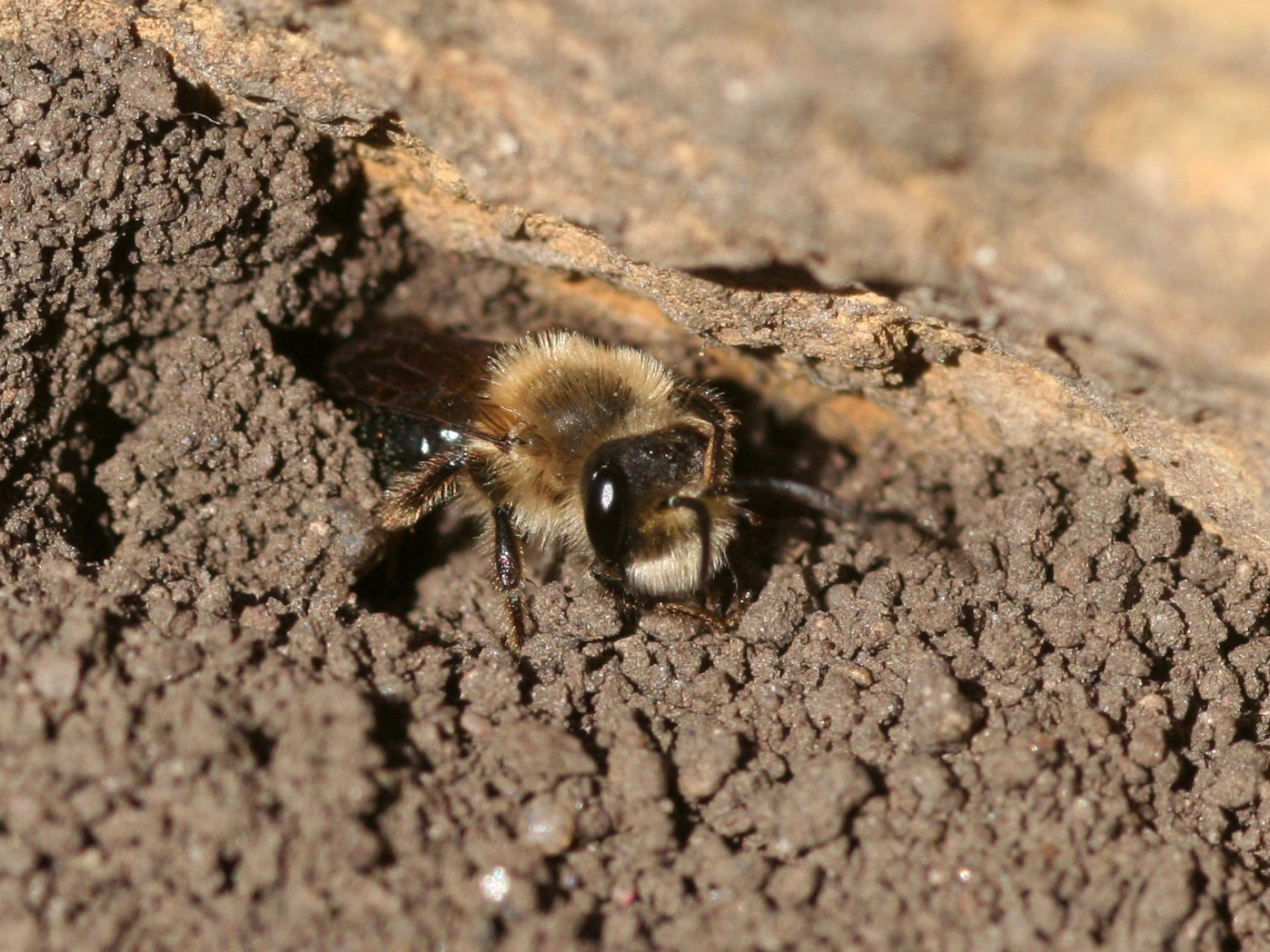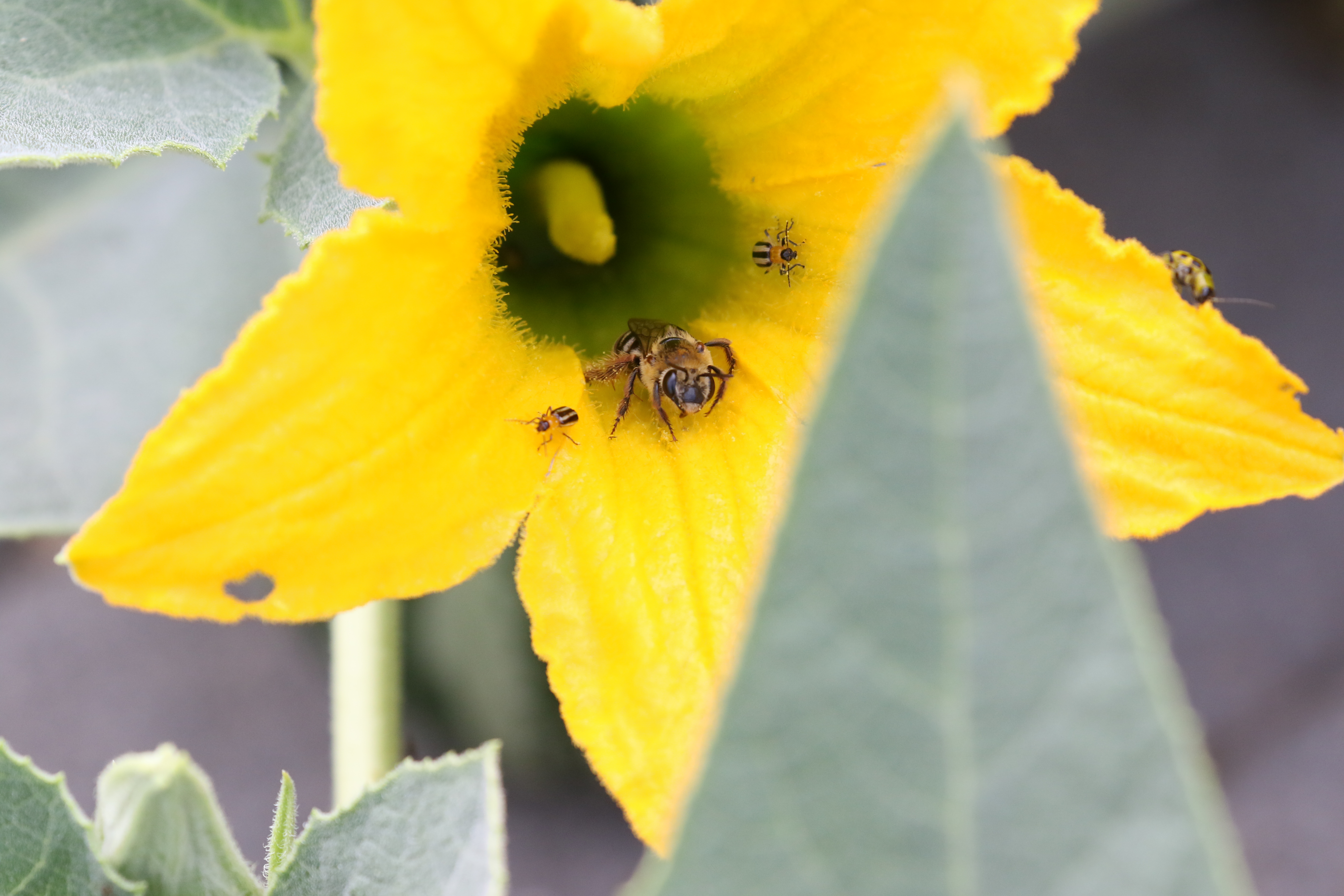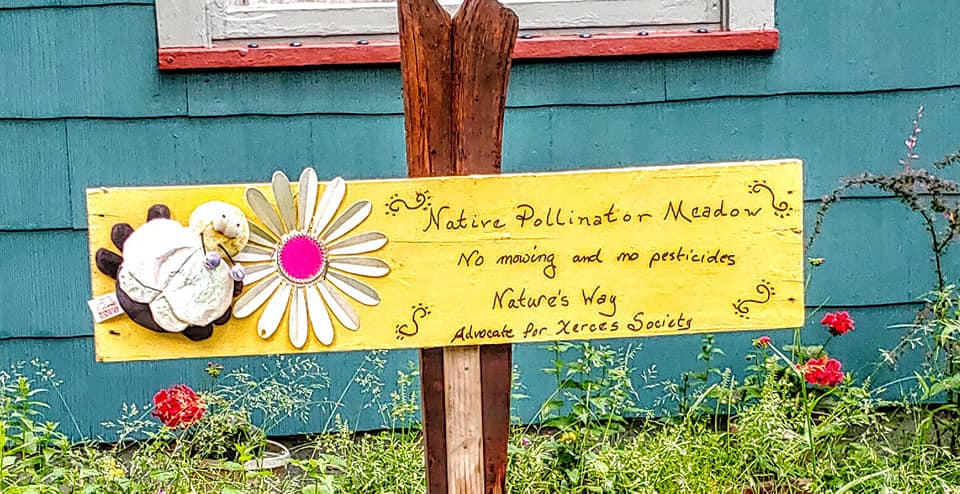Providing nesting sites and reducing or eliminating pesticide use is key to supporting these important pollinators.
Since we are in the midst of Pollinator Week, I’d like to share a recent pollinator discovery I made in my yard. This may not be as consequential to the scientific community as my colleague Candace Fallon’s recent discovery of a new butterfly subspecies—she also had the honor of it being named after her: Candace’s copper, Lycaena mariposa candia! But experiences like mine are still exhilarating for those of us who practice conservation at home, and serve as motivation and validation as we work to cultivate pollinator habitat.
For my part, over the past nine years, I have slowly been expanding the pollinator garden that is directly outside my home office window. Throughout the summer, I look out at a profusion of flowers buzzing with bees, butterflies, and other wildlife. California poppies dominate, but they are intermixed with a number of other plants to feed the bees. Yarrow, goldenrod, Nooksack roses, and showy milkweed are all starting to flower. The early-flowering camas is senescing. The blossoms on the mock orange and river lupines look ready to pop! The Douglas asters don’t have blooms yet, but they will provide late-season forage when most other plants are done flowering, and pollinators still require food.
So back to my cool discovery: this spring I found that ground nesting bees are making their homes in my yard! I inadvertently created this habitat when I removed some turf grass from the edge of my landscaping and put in native fescue. In early May, while checking to see how the bunch grass was establishing, I noticed four small holes that I hoped were bee nesting sites. After accidentally forcing a female bee to exit a hole (I was watering the fescue), I consulted my colleague, Emily May, a pollinator specialist here at Xerces. We think it was a polyester bee (family Colletidae). Bottom line: the presence of these ground nests shows that I am successfully providing for all the life stages of bees on my own property!
In fact, seventy percent of native bee species in the United States are ground nesting. There is not a lot known about the specific environments that ground nesting bees seek (compaction, soil type, etc.), but they do seem to be drawn to sunny, bare soil. Regardless of the details, we know that providing nesting sites is key to supporting these vital pollinators.
If you’d like to support ground nesting bees in your yard, the first step is to clear vegetation from a sunny, well-drained area. If possible, select sites on an open, south-facing slope. Leave some clumps of grass or other low-growing plants to prevent erosion. Don’t turn the soil in the area, as bees need stable soil to nest in (young bees spend up to eleven months of the year underground).

Another important step to support ground nesting bees is to protect them from pesticides. While some pesticide labels direct applicators to not spray a pesticide while bees are foraging, those instructions won’t protect ground nesting bees from exposures to contaminated soil. This contamination is especially bad news for species like the squash bee (Peponapis pruinosa) that nest at the base of crop plants.
There are a surprising number of “soil drench” products marketed for home gardeners to control insect and disease problems. Fortunately, a home gardener should have little to no reason to ever use pesticides. An ounce of prevention is often enough to avoid pest problems. And when a pest—whether it’s an insect, weed, or disease—is actually causing harm, it can be handled through non-chemical methods. You can learn more about managing pests in a home garden in our new guidance, Smarter Pest Management: Protecting Pollinators at Home.

In agriculture, the common and growing practice of planting seeds coated with insecticides can also lead to contamination levels potentially harmful to bees nesting in and around crop fields. A number of concerns—insecticide-laden dust killing foraging bees, residues running into waterways, and pests building up resistance—have been raised about the practice of planting seeds coated with insecticides. Now evidence suggests that the soil contamination can also harm the many beneficial insects that live in the soil, including native bee species.
Here at Xerces, we work with home gardeners, farmers, and other land managers to transform their pest management practices into methods that support biodiversity and make lands more resilient.
So this year for Pollinator Week, let’s celebrate all the people that are transforming their patch of land to be more pollinator-friendly. That includes the wine grape and walnut growers in California planting strips of wildflowers to draw in beneficial insects—creatures that help control pests. I commend the farmer in Manitoba that stopped planting insecticide-treated seeds, and also has planted a hedgerow for pollinators. And I also want to celebrate my neighbor, who, at age seven, made us all pledge to not use pesticides in our yards. Eight years later, we not only still have a pesticide-free block, but also we trade seeds to expand pollinator habitat and marvel at the diversity of pollinators we have attracted.

Further Reading
Check out our Nesting Resources page!
Publications related to this topic:
- Even if you only use organic products in your yard, there are still some risks to consider. You can learn more about organic products and how to protect pollinators in our new report, Organic Pesticides: Minimizing Risks to Pollinators and Beneficial Insects.
- Learn about alternatives to chemical pesticides in this newly published and easy-to-read guidance for home gardeners: Smarter Pest Management: Protecting Pollinators at Home.
- While not a new publication, if you’d like to learn more about creating habitat for ground nesting bees, I also recommend checking out Enhancing Nest Sites for Native Bee Crop Pollinators.
Learn more about the Xerces Society’s Pesticide Program.
Check out the rest of our Pollinator Week content!



